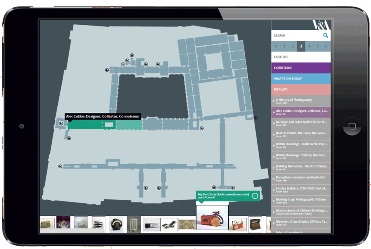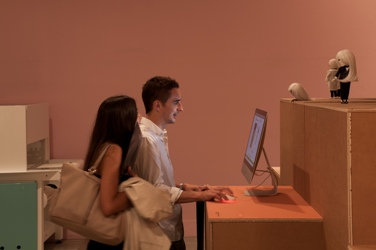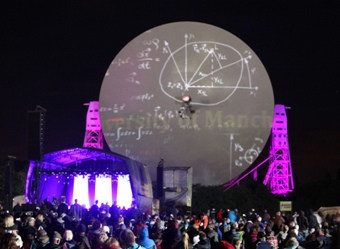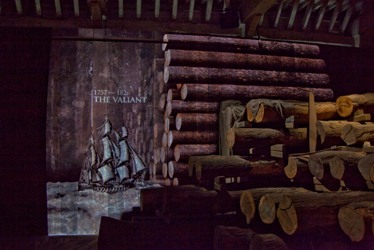Half Memory from the Tyne & Wear Archives & Museums is a programme of innovative multimedia outputs produced to inspire new audience engagement with collections. Artists and musicians working with sound and the moving image were invited to unearth material from the collections of Tyne & Wear Archives and Museums and create digital outputs in response (these included two full length music albums and an accompanying film). A week-long programme was also broadcast on BASIC FM featuring 27 audio programmes.
The aim was to connect new audiences with TWAM’s collections through compelling digital experiences; audiences who engage with multimedia online and attend live cultural events but who rarely engage with heritage materials online.
The digital outputs were accessed by many thousands with a high depth of engagement evident. Of this audience, a significant proportion was new, ‘non-heritage’. Communities of digital producers also engaged with the museum collections and contributed hundreds of producer hours as well as submitting innovative collections reuse proposals following the public launch.
The project proposes that heritage collections are a starting point for innovative ideas and the museum is a space in which audiences can develop them. Creative and novel reuse of collections was central to the project’s success.

Pompeii Live for Schools was a live, interactive cinema event from the British Museum which introduced Key Stage 2 pupils to the world of the Ancient Romans in AD79 when the eruption of Mount Vesuvius destroyed the towns of Pompeii and Herculaneum. The broadcast was produced specifically for school children aged 7-12 all over the UK and the world. The event took them round the exhibition ‘Live and death in Pompeii and Herculaneum’ and behind the scenes at the British Museum.
Teachers were consulted and provided with online support and learning resources to complement the broadcast in the UK. The broadcast gave teachers the opportunity to develop aspects of the programmes of study for History, English, Science and Geography, Art and Design and PSHE & Citizenship.
The film, which was produced in house, received a very positive response from schools around the UK. It was the first live cinema event produced by a museum specifically for school children and its success has resulted in another event being commission from Vikings; Life and Legend. Along with its sister broadcast, Pompeii Live, the film allowed the museum to connect with the widest possible audience. A cinematic learning experience was provided to children for a low ticket price; teachers resources were available online and a successful online social media campaign allowed the story to build leading up to the broadcast.

The V&A Digital Explorer Map from the Victoria and Albert Museum gives web visitors a completely new visual way to explore the V&A. It allows visitors to explore the many spaces and galleries in the V&A and discover the amazing objects that are on display from the comfort of their own sofa. If you are using the map in the museum it can help visitors to find out about events that are taking place as well as finding facilities.
The map’s objective is to make the experience of exploring the museum on any device an interactive and pleasurable one, much like a wander through the building itself. Based on research of visitors to the V&A and audience data trends for how people access the web, the map works on tablets and smartphones and is directly synchronized with the core collections and events systems.
In the first 4 months after its launch the map was used nearly 3 times as much as the PDF map in the equivalent previous period. Proportionate use on tablets and smartphones has also been much higher with 20% access on tablets and 17% on mobile. Time spent on the map has increased and the average overall visit to the site has also increased by 58% on tablets. Comments on social media have also been very positive. The design has been shortlisted for a User Interface UK Award
Whilst the map is familiar as a traditional map, collection records and event information have been blended to create a completely new and original way of finding the riches of the V&A. It has been built to be fully integrated within the website and is supported by existing management processes.

The Future is Here: A New Industrial Revolution was a temporary exhibition at the Design Museum exploring a new model of manufacturing. TFiH aimed to help visitors see how new technologies could affect commerce, industry and the way we live.
Visitor understanding of the exhibition depended on engagement with the content which included customizable 3D printed dolls, robotic arms, crowd-sourced sofas and biodegradable shoes. Interpretation was devised to turn visitors from passive spectators into active participants in order to bring this complex subject to life. People were encouraged to explore their changing relationship with the designed world and to gain an insight into how the impact of digital technologies could rival that of previous industrial revolutions. The exhibition set itself was an exhibit in response to emerging manufacturing technologies.
With a move to an expanded site planned, the exhibition allowed the museum to trial new ways of engaging audiences with developments at the forefront of design. Some exhibits were animated through interpretive films and an augmented reality app was created to demonstrate how recycling might change. When a tablet computer was held over certain exhibits the app displayed a breakdown of the materials in the object and highlighted what could be made by recovering and recycling the materials. Live interpretation by front of house staff demonstrated the design and making of objects as well as supporting visitors in contributing to the creation of new objects.
The exhibition was the major attraction during its run and attracted a huge number of page visits, blog visits and Vimeo views. TFiH is beginning a global tour in Melbourne.

The Jodrell Bank Projections saw the Grade 1 listed Lovell radio telescope at Jodrell Bank Observatory used as a giant projection screen for a mass public audience.
Trying to attract young adults to cultural venues, especially science-oriented attractions can be challenging. Jodrell Bank piloted a series of science-music festivals in 2011/12. Attendees at the events were drawn by the music offer but in parallel the centre ran a science fair comprising a huge range of booths staffed by research scientists who entertained attendees with hands on science demonstrations.
Projecting a film onto the surface of the Lovell Telescope itself was well received at these events so it was further developed for the extended 2013 concert series, headlined by the Halle Orchestra. The event coincided with the 100th anniversary of Sir Bernard Lovell, founder of Jodrell Bank, and a bespoke film celebrating the heritage of the Observatory and Lovell’s birthday was commissioned.
80% of festival attendees said that they had learnt something about science and 65% expressed an interest in learning about the heritage of the site. Analysis of the age range of respondents showed that the project demonstrated success in doubling the usual audience ratio of young people. Using digital imagery and incorporating a narrative strand the project fused history, science and entertainment to engage and inform an audience who would not typically engage with science heritage. The production and projection costs were absorbed into the event as a whole making it a very cost effective way to engage with the target audience.

‘Hearts of Oak’ is a 30 minute digital theatre Museum-based visitor attraction at the Chatham Historic Dockyard. Visitors follow life-sized historical characters as they appear around the various rooms and spaces. The actors and accompanying backdrops and graphics are video mapped onto the original building walls and period recreation set works.
The project set out to re-purpose an existing theatrical setting representing the dockyard built in 1990 which was felt to be outdated. Digital video, surround sound and video mapping the content on to the building itself was deemed essential. An innovative technical solution needed both to attract new visitors as well as satisfy the needs of regular repeat visitors.
The new installation is described as ‘ digital promenade theatre’. The projected full size live action characters are joined by other characters along the way; the figures, trompe l’oeil effects and illustrative graphics are mapped to the fabric of the building. The combination of high end media embedded in the rich theatrical setting creates a new interpretive dimension which brings the story of the people, ships and processes to life in a memorable way.
We’ll be featuring all of the shortlisted projects in each category in the run up to the awards. The winner will be announced on 14th May at the Awards Ceremony to be held at 8 Northumberland Avenue, London. Click here to book your table.
Back to top




